Strength training is an excellent way to build muscle, improve endurance, and boost overall health. If you are new to weight training, dumbbells are a fantastic starting point. They are versatile, easy to use, and can be incorporated into a variety of workouts.
In this blog, we will take you through everything you need to know about strength training for beginners using dumbbells, including the benefits, essential exercises, and how to adjust the dumbbells. and how to set up an efficient home strength training routine!
Key Takeaways
- Dumbbells are a beginner-friendly, versatile tool for full-body strength training.
- Start with light weights, focus on form, and gradually increase resistance.
- A consistent routine of 2–3 sessions per week helps build strength and confidence.
- Proper warm-ups, cool-downs, and breathing techniques are essential to avoid injury.
- Home workouts with dumbbells can be just as effective as gym sessions when done right.
Why is Strength Training Important?
Strength training provides numerous health and fitness benefits, making it an essential part of any exercise routine. Some key benefits include:
-
Building muscle and strength: Regular weight training improves muscle tone and increases overall body strength
-
Boosting metabolism: Strength training helps burn calories even at rest, helping in weight management
-
Strengthening bones: Weight-bearing exercises reduce the risk of osteoporosis and improve bone density
-
Enhancing posture and balance: A strong core and muscles contribute to better stability and posture
-
Reducing the risk of injuries: Strengthening muscles, tendons, and ligaments helps prevent injuries in daily activities
-
Improving mental health: Exercise releases endorphins, reducing stress and improving mood
If you are new to strength training, starting with a structured plan using dumbbells will help you gain confidence and see results effectively.
Getting Started with Dumbbells
Choosing the Right Dumbbells
For beginners, selecting the right dumbbells is important. Here are some tips:
-
Start light: Begin with light weights to focus on proper form before increasing intensity
-
Gradual progression: As you gain strength, gradually increase the weight in small increments
-
Consider adjustable dumbbells: Learning how to use adjustable dumbbells can be beneficial as they allow you to change weights easily, saving space and money. These are ideal for those who want a range of weights without purchasing multiple sets
Setting Up a Safe Workout Space
Whether at home or the gym, ensure your workout area is clear of obstacles. Use a mat for grip and stability, wear comfortable workout clothing, and keep a water bottle nearby to stay hydrated.
Beginner Dumbbell Workout Plan
A structured plan helps you stay consistent and track progress. Below is a simple dumbbell workout plan for beginners.
Full-Body Dumbbell Workout
Perform 3 sets of 10-12 reps for each exercise. Rest for 30-60 seconds between sets.
1. Dumbbell Squats
-
Hold a dumbbell in each hand at your sides
-
Stand with feet shoulder-width apart
-
Lower into a squat, keeping your back straight and chest up
-
Return to standing position while engaging your core and glutes
2. Dumbbell Shoulder Press
-
Hold a dumbbell in each hand at shoulder height
-
Press the weights upward until your arms are fully extended
-
Slowly lower back to the starting position
-
Engages the shoulders, triceps, and upper chest
3. Bent-Over Dumbbell Rows
-
Hold a dumbbell in each hand, and bend slightly forward at the waist
-
Pull the dumbbells towards your waist, squeezing your shoulder blades
-
Lower the dumbbells slowly back to the starting position
-
Strengthens the upper back and arms
4. Dumbbell Lunges
-
Hold a dumbbell in each hand at your sides
-
Step forward with one leg and lower your body until both knees are at 90-degree angles
-
Push back up and switch legs
-
Improves leg strength, balance, and coordination
5. Dumbbell Bicep Curls
-
Hold a dumbbell in each hand with palms facing forward
-
Curl the dumbbells towards your shoulders, squeezing the biceps
-
Lower them slowly to the starting position
6. Dumbbell Deadlifts
-
Hold a dumbbell in each hand in front of your thighs
-
Hinge at your hips and lower the dumbbells towards your feet, keeping a straight back
-
Return to the standing position by engaging your core and glutes
-
Strengthens the lower back, hamstrings, and glutes
How Often Should Beginners Train?
Beginners should start with 2-3 strength training sessions per week, allowing rest days in between for muscle recovery. As you gain strength and confidence, you can gradually increase the frequency or incorporate different exercises.
How to Advance in Strength Training
Gradually Increasing Weight
As you get stronger, increase the weight of your dumbbells. A good rule of thumb is to increase the weight when you can complete 12 reps comfortably without feeling too fatigued.
Improving Form and Technique
Proper form is essential to avoid injury. If unsure, consider working with a trainer or watching tutorial videos. Practising in front of a mirror can also help you check and correct your posture.
Adding Variations
Once comfortable with basic exercises, try different variations such as:
-
Sumo Squats (wider stance to target inner thighs)
-
Arnold Press (twist the dumbbells while pressing up)
-
Reverse Lunges (step back instead of forward for a different challenge)
This keeps your workouts engaging and targets muscles from different angles.
Strength Training at Home
Home strength training with dumbbells is convenient and effective. Here’s how to set up an effective workout at home:
-
Choose a dedicated space with enough room for movement
-
Use a mirror to check your form
-
Follow an online workout plan or use a fitness app
-
Stay consistent with your routine to see long-term results
Common Mistakes to Avoid
Lifting Too Heavy Too Soon
Starting with weights that are too heavy can lead to poor form and injuries. Always begin with manageable weights and progress gradually.
Ignoring Warm-Ups and Cool-Downs
Warm-ups prepare your muscles for exercise and reduce injury risk. Cool-downs help prevent stiffness and aid recovery. Spend at least 5-10 minutes warming up with light cardio and stretching before starting your workout.
Holding Your Breath
Breathe naturally throughout exercises—inhale when lowering the weight and exhale when lifting. Proper breathing enhances performance and prevents dizziness.
By following this guide, you can start strength training with confidence and gradually build strength with dumbbells. Stay consistent, focus on form, and enjoy your fitness journey!
FAQs
1. How long does it take to see results from strength training?
Results vary, but most beginners notice strength improvements within 4-6 weeks with consistent training.
2. Can I do dumbbell workouts every day?
It’s best to have rest days to allow muscles to recover. Training 2-3 times per week is ideal for beginners. Overtraining can lead to muscle fatigue and injury.
3. What weight should I start with?
Start with 2-5 kg (5-10 lbs) dumbbells for upper body exercises and 5-10 kg (10-20 lbs) for lower body exercises. Adjust as needed based on your fitness level.
4. Can I lose weight with dumbbell workouts?
Yes! Strength training helps burn calories and boost metabolism, especially when combined with a balanced diet and cardio exercises like walking, running, or cycling.








